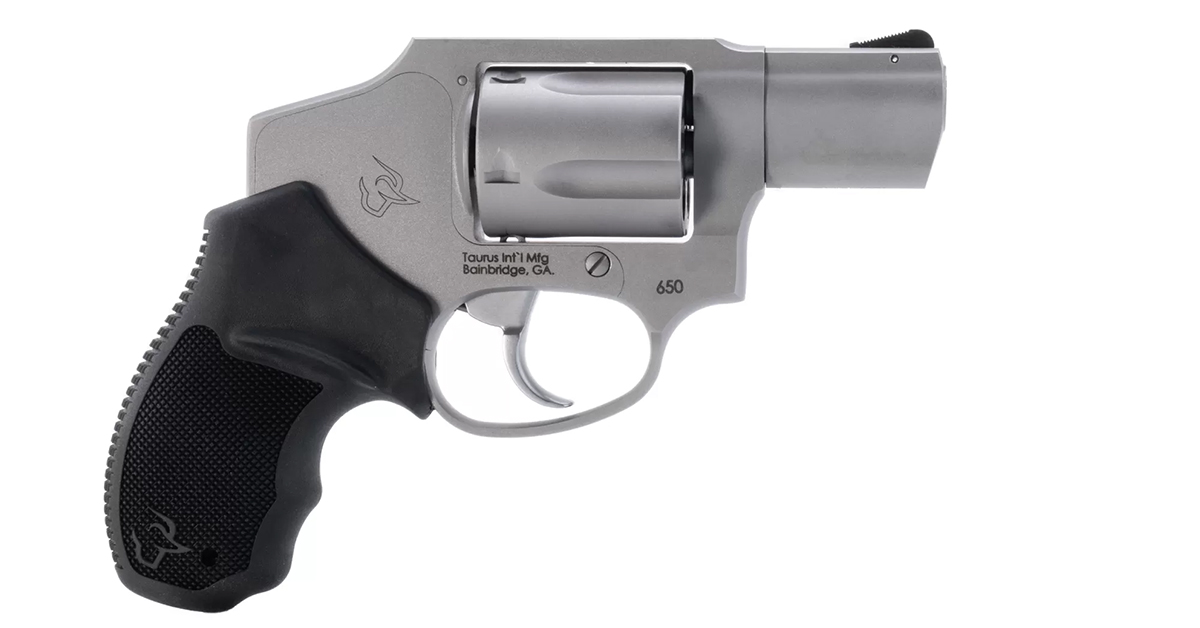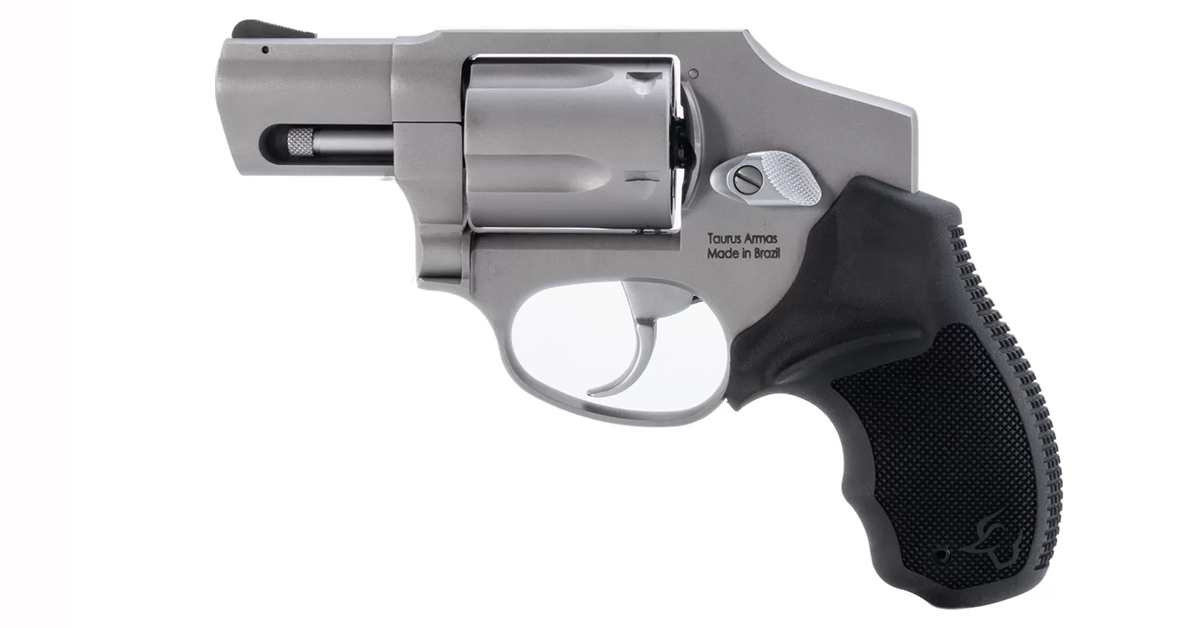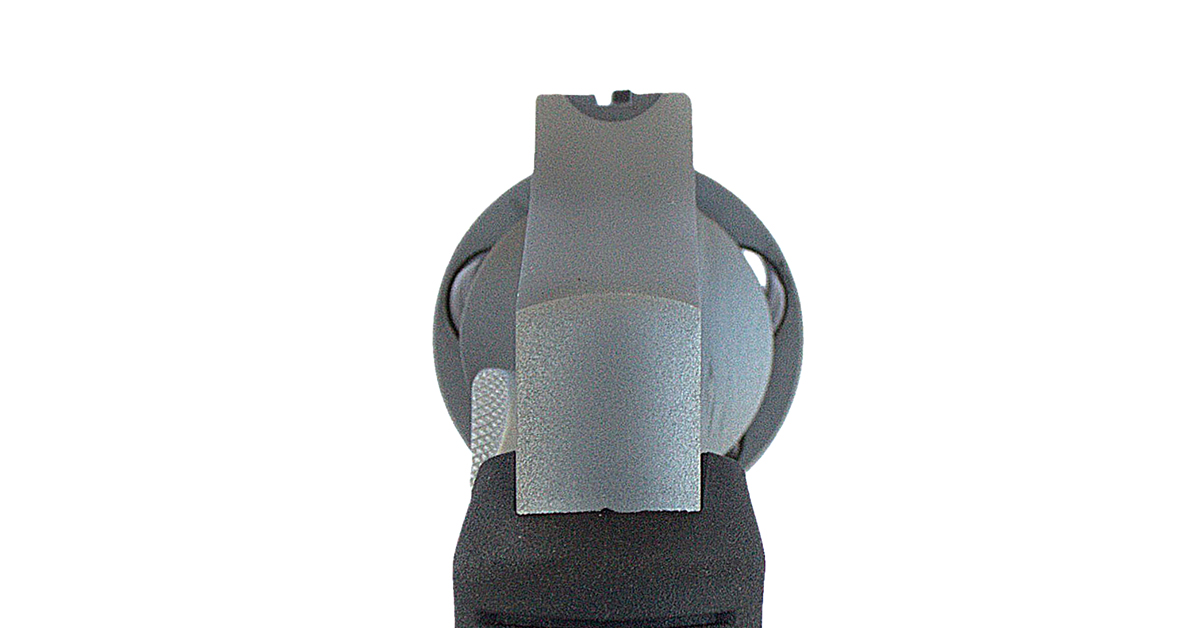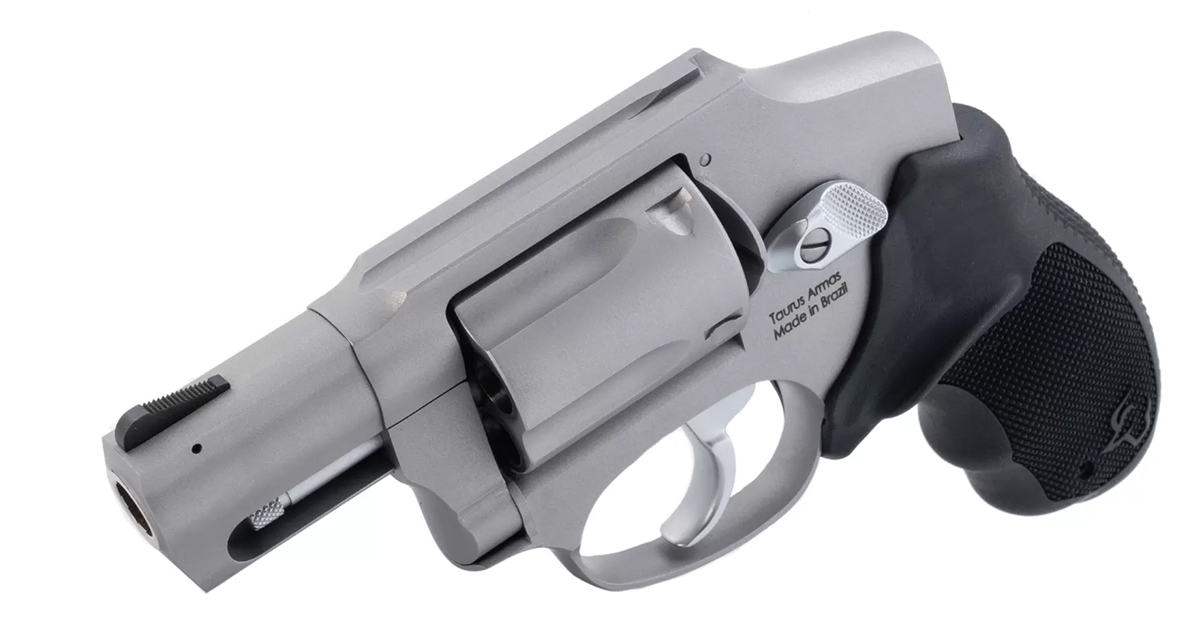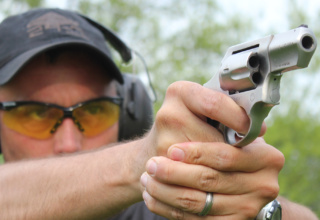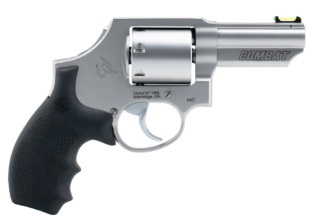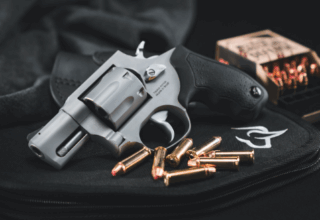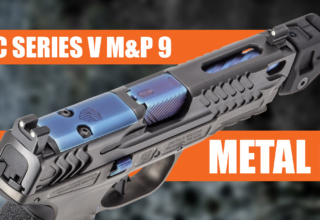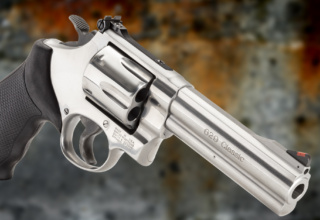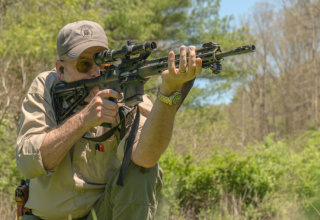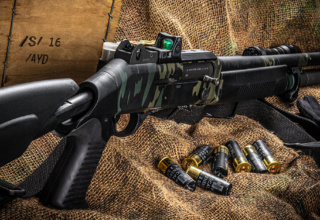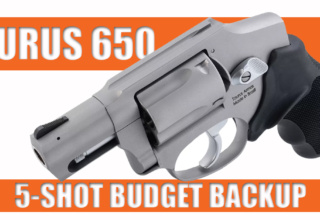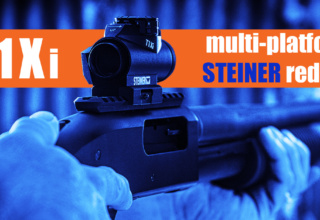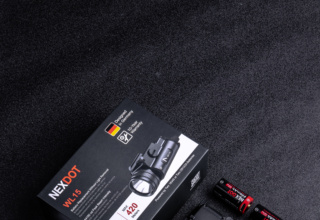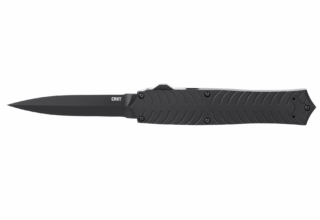No frills, just solid revolver performance at an affordable price — meet, again, the Taurus 650
by Bob Campbell
The revolver illustrated is a reintroduction of the Taurus 650 — in part. This handgun features useful upgrades and an enhancement in quality compared to the original issue.
The double-action revolver is a viable defensive firearm for many uses for those who practice. In the words of my friend Jerry Brickhouse, “This isn’t a gun to be left in a drawer and seldom fired if you are going to carry it.”
The snubnose revolver is a simple definition. These are small-frame handguns with a barrel length of 1 7/8 to 2 1/4 inches. The cylinders are often five-shot but may be six-shot. Caliber is usually .38 Special but other choices exist. Many are chambered in the powerful .357 Magnum. This cartridge may be problematic in such a lightweight revolver but, never being one to avoid rapped knuckles, I gave it a try. A snubnose revolver fits into a pocket or traveling bag easily without being subject to firing if it snags on something — although it should be in a holster. I regard a revolver with a 2.5- to 3-inch barrel as a short-barrel revolver but not a snubnose.
My Two Gun Argument
A revolver is my favored backup. For those who don’t carry a gun, a gentleman carrying two guns may seem unreasonably mistrustful of the human race. I have good reasons built upon a lifetime of faith, experience, training, and a desire not to die young.
Today, when I carry a revolver outside the home, I often carry two; and when I carry two handguns, the backup is always a revolver. Here is why.
Nothing made by man is infallible. A backup is good to have if the primary arm jams, breaks, or runs dry. The revolver is a simple piece, easily drawn and fired with a quick trigger press. Sometimes, the revolver rides in an ankle holster — I would never carry the primary gun in an ankle holster — and will come up firing without regard to debris and the elements. A revolver isn’t subject to short cycles if not gripped properly in haste. The revolver may be pressed into an opponent’s body and fired repeatably. If you need the backup at close proximity, the struggle may be at intimate range.
In particular, the revolver is useful against wild animal attacks. They often come out of nowhere and go for the neck. They may bowl you over. The revolver is an ideal backup and outdoors handgun. I won’t underrate the reliability and hit probability of a modern self-loading handgun, but the revolver fills a certain niche well. While the snubnose revolver may seem like a single-purpose handgun, there is some utility other than close-range defense.
The Particulars
The Taurus 650 is manufactured of stainless steel. The finish is dull brushed matte. A lightweight frame isn’t appealing in a revolver firing .38 Special +P loads, much less .357 Magnum level loadings, so all that steel weight is appreciated.
The 650 features a two-inch barrel and five-shot cylinder. The hammer is hidden. The double-action-only Taurus includes a transfer bar ignition — the safest possible revolver action. A bar between the hammer and frame-mounted firing pin prevents the revolver from firing unless the trigger is pressed fully to the rear. As the trigger is pressed, the transfer bar rises to cover the firing pin. The hammer strikes the bar, which transfers energy to the firing pin. As the trigger is released, the bar returns to the safe position, preventing the hammer from touching the firing pin.
The action is smooth, without grit or hitches, but is heavier than I like — or so I thought at first. The front sight is pinned in.
The rear sight is a long trough in the top strap, wide and offering a good sight picture for this type of revolver. The rear notch is more of a U than the usual squared fixed sight revolver. The contrast of a black front sight against a stainless-steel groove worked well in aimed fire.
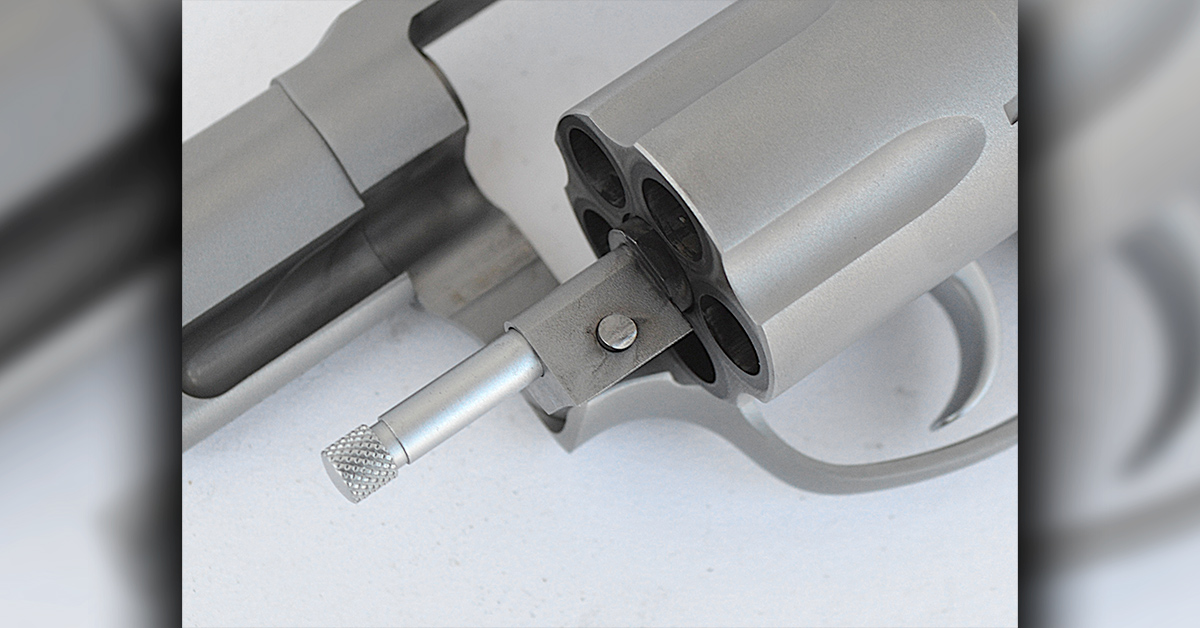
The cylinder unlocks by pressing the cylinder release forward and swinging the cylinder out. The revolver is loaded one chamber at a time or by use of a speed loader. Be certain the barrel is pointed down for loading and up for unloading to take advantage of gravity. A spring-loaded plunger on the yoke helps lock the cylinder tight.
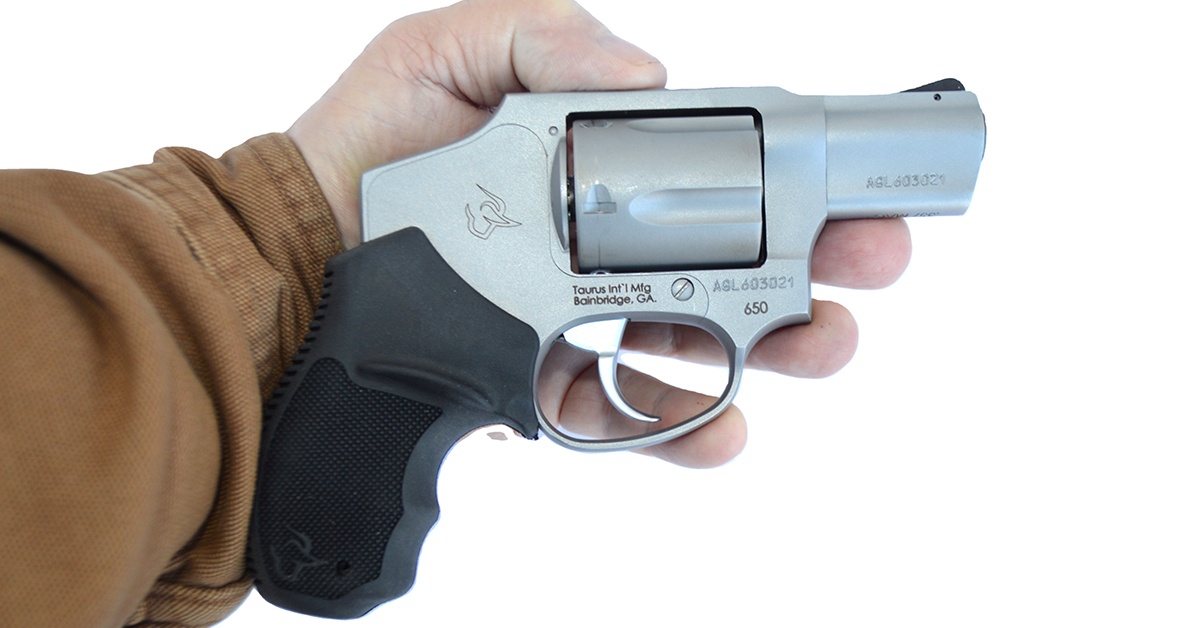
The two-inch barrel is nicely shrouded with an underlug protecting the ejector rod. The trigger is wide and smooth — ideal for rapid double-action work. The frame is sometimes called a humpback frame. This frame conceals the hammer and makes for a smooth draw from a pocket or belt without the danger of snagging a hammer spur on garments. This frame also has the bonus of helping control recoil by sitting high in the hand. The grips are among the best designed for controlling recoil that I have examined. They give a little like a recoil pad and separate the metal frame from your hand, making for a less punishing experience. Ribbing along the grip’s backstrap aids in control. Shelves on the grip for the thumb are not a target feature; rather, they make for an excellent stabilizing rest when firing the revolver.
Overall, the revolver is well thought out.
Firing Tests
The Taurus 650 is chambered in .357 Magnum, but like most shooters, I concentrated on .38 Special ammunition. I conducted testing over several weeks, firing the Taurus 650 with a good mix of ammunition. This revolver is easily controlled — even docile — with standard pressure ammunition. The .38 Special has been regarded as the heaviest kicker the average occasional shooter may control well, and this is as true today as it was decades ago.
I used the Fiocchi 130-grain FMJ loading for practice and also handloads driving a 158-grain SWC at 780 fps.
The revolver gets on target quickly. This isn’t a handgun to stitch the target with. Get on target and press the trigger. As the revolver recoils, control the sights and get back on the X. Sight wobble is always there, but don’t fight it.
I fired quickly at five yards and slowed a little at seven yards. The maximum distance I attempted was 25 yards and I was able to get center hits. I would not be helpless at this range, yet it takes time to achieve a hit at greater distances. Results are excellent for this type of gun. The trigger action is heavy but smooth and helped in controlling the anticipation of recoil.
I also fired several +P loads. These loads vary in recoil, with some taxing the shooter and others giving a reasonably modest jolt. For an experienced shooter, the heaviest .38 Special loads make a reasonable choice in a personal defense loading for Magnum revolvers. They are controllable and, as my testing shows, the Taurus 650 revolver, properly handled, can make fast hits with heavy loads. Fire quickly at close range and slow down for hits at longer range. The Taurus has good hit probability and is at its best inside of 10 yards.
Magnums
Magnum loads must be carefully chosen. The 158-grain loads intended to burn their powder charge in a six-inch or longer barrel don’t do well in a snubnose revolver. A 158-grain bullet at 1,000 fps that doesn’t expand isn’t very effective. Yet, this loading will exhibit painful recoil and extreme muzzle blast. Muzzle blast is primarily unburned powder. The 125-grain loads intended for defense use make the most sense for those willing to master the Magnum in this lightweight revolver.
I feel that the Taurus offers a good measure of protection against feral dogs and the big cats. Remember pressing the revolver into the body and firing? No, this isn’t the revolver to conduct long-range accuracy tests or pursue endurance testing, but I fired enough loads to understand its versatility. As an example, while snakes are easily handled with a walking stick, shotshells offer a surefire snake shredding load. The pellets won’t carry past a few yards.
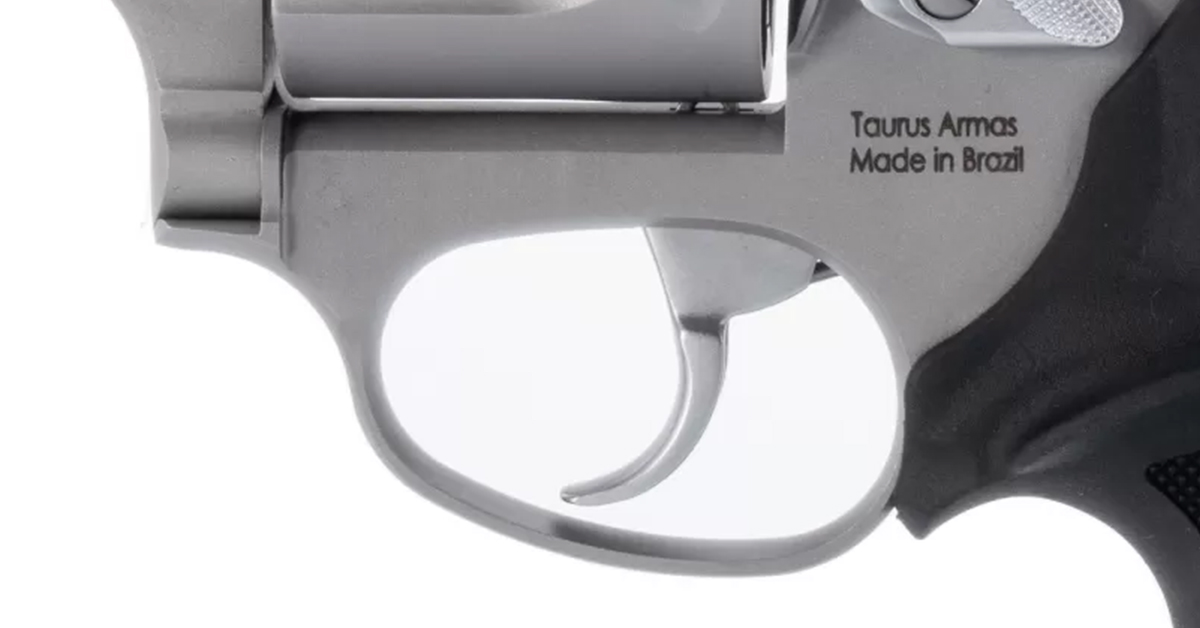
The .38 Special practice loads are plentiful. A standard pressure JHP is an alternative for those who, for one reason or another, cannot control +P loads well. The .38 Special +P offers a good combination of expansion and penetration. For those trips into the wild and beyond, a Magnum load offers bone-breaking performance. The Taurus 650 is, therefore, a versatile revolver for many uses. If only put to its primary use as a lightweight personal defense revolver, it is well worth its price.
Carrying the Taurus 650
I chose two inside-the-waistband holsters for evaluation. For a fast on and off holster with an affordable price tag, the Galco Stow-N-Go is a good choice. The holster mouth is reinforced, and the belt clip takes a good latch onto the belt. The holster doesn’t collapse when the revolver is drawn.
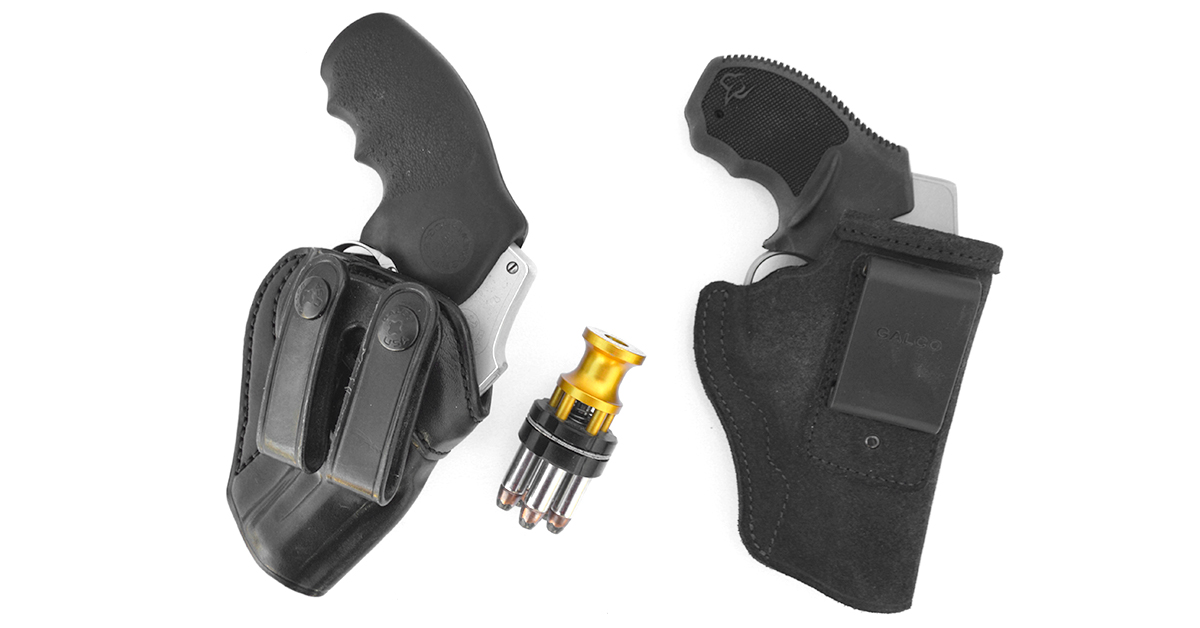
For a dedicated legacy holster, Galco’s Summer Comfort offers superb construction. The all-leather holster is nicely molded to the individual handgun with good edging and excellent stitching. The holstering welt is robust and well stitched. The draw is sharp for those who practice. Two leather belt loops attach firmly to the belt. This is a well-designed holster and among a few I own more than one example of for various handguns.
Velocity Testing
.38 Special
- Buffalo Bore 110-grain Barnes TAC: 960 fps
- Buffalo Bore 125-grain JHP LOW FLASH: 913 fps
- Buffalo Bore 158-grain LSWCHP Standard Pressure: 859 fps
- Federal 110-grain Hydra Shock: 801 fps
- Federal 129-grain Hydra Shock +P: 822 fps
- Fiocchi 110-grain +P: 921 fps
- Fiocchi 125-grain JHP: 937 fps
- Hornady Critical Defense Lite 90-grain: 915 fps
- Hornady Critical Defense 110-grain: 834 fps
- Hornady Critical Defense 110 grain +P: 909 fps
.357 Magnum
- Barnes 125-grain TAC: 1208 fps
- Buffalo Bore 125-grain Barnes TAC Low Flash: 1160 fps
- Hornady 125-grain XTP: 1220 fps
- Hornady 125-grain Critical Defense: 1190 fps
- Hornady 135-grain Critical Duty: 1170 fps
- Speer 158-grain Gold Dot: 968 fps
What I Like
- The piece is affordable, but there seems to be no corners cut. The satin nickel finish is attractive, low key, and durable. My example is reliable and snag-free. Sight regulation is good.
What I Don’t Like
- In the context of small revolvers, the Taurus hits all the right notes. I would like an even smoother action, but I suspect that will come as I continue to run the trigger.
What I Would Change
- The action, again, and perhaps a taller front sight.
Compare To
- There is nothing really comparable in the price range. The Taurus 605 is good if you prefer an exposed hammer and single-action option. The Smith & Wesson 442 is lighter, chambered in .38 Special, and kicks more. The Smith & Wesson 640 is a similar Magnum revolver that costs a lot more. Overall, the Taurus 650 is in a good spot.
Taurus 650 .357 Magnum
- Caliber: .357 Magnum
- Action: DAO only
- Capacity: 5 shots
- Barrel Length: 2.0 inches
- Frame and Cylinder: stainless steel
- Safety: transfer bar
- Overall Length: 7.66 inches
- Weight: 22.9 ounces
- MSRP: $552.99

